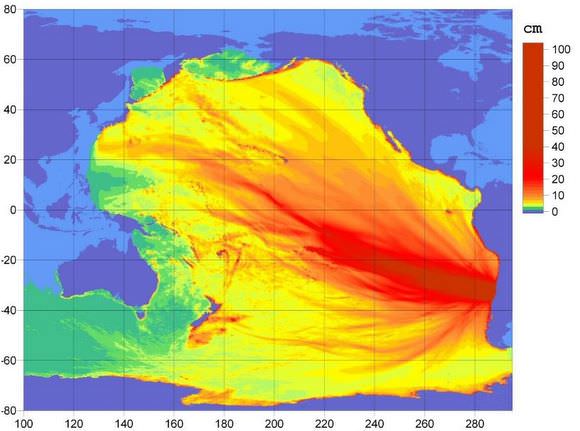[/caption]
Yikes! Just how big was the magnitude 8.8 earth quake in Chile? One scientist says the shaking may have affected the entire planet by shifting Earth on its axis. This possibly may have shortened the length of a day on Earth by about 1.26 microseconds. Using a complex model JPL research scientist Richard Gross computed how Earth’s rotation should have changed as a result of the Feb. 27, 2010 quake. If his figures are correct, the quake should have moved Earth’s figure axis (the axis about which Earth’s mass is balanced) by 2.7 milliarcseconds (about 8 centimeters, or 3 inches).
Earth’s figure axis is not the same as its north-south axis; they are offset by about 10 meters (about 33 feet). By comparison, Gross said the same model estimated the 2004 magnitude 9.1 Sumatran earthquake should have shortened the length of day by 6.8 microseconds and shifted Earth’s axis by 2.32 milliarcseconds (about 7 centimeters, or 2.76 inches).
Gross said that even though the Chilean earthquake is much smaller than the Sumatran quake, it is predicted to have changed the position of the figure axis by a bit more for two reasons. First, unlike the 2004 Sumatran earthquake, which was located near the equator, the 2010 Chilean earthquake was located in Earth’s mid-latitudes, which makes it more effective in shifting Earth’s figure axis.
Second, the fault responsible for the 2010 Chiliean earthquake dips into Earth at a slightly steeper angle than does the fault responsible for the 2004 Sumatran earthquake. This makes the Chile fault more effective in moving Earth’s mass vertically and hence more effective in shifting Earth’s figure axis.
Gross said the Chile predictions will likely change as data on the quake are further refined.
Source: JPL



